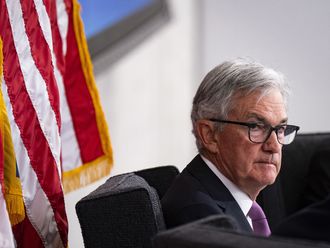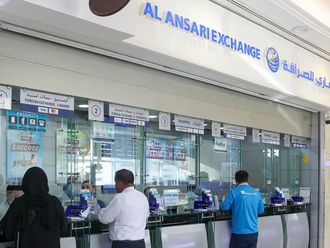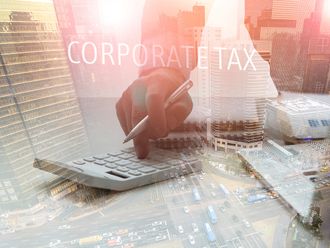Johannesburg: South African regulators are investigating unsecured lending by the biggest banks amid concern inflation and bad debt may surge in a country where consumers don't save and almost one in four is jobless.
The analysis will examine the pace and causes of the growth, the banks that are doing the lending, and whether the borrowing is being used for consumption or capital spending, Rene van Wyk, who was appointed as South Africa's Pretoria-based Registrar of Banks in October, said in an interview yesterday.
"The report will be issued in the second half — next year may be too late," said Van Wyk, who previously headed the risk department for the investment-banking unit of Nedbank Group Ltd. Unsecured lending remains a relatively small portion of big banks' balance sheets, he said.
The total value of unsecured loans by the third quarter of 2011 rose 53 per cent to 101.1 billion rand (Dh49 billion) from the previous year, according to South Africa's National Credit Regulator. That represents 8 per cent of all lending in South Africa, up from 5.7 per cent in 2010, the agency said. At the same time, unemployment is 24 per cent, the highest of 61 nations tracked by Bloomberg, and the central bank reported savings as a percentage of household income was zero in the third quarter.
The growth in unsecured lending may fuel spending and inflation, causing interest rates to rise more than expected, Annabel Bishop, a Johannesburg-based economist at Investec Ltd, said in a March 6 report that estimated South Africa's benchmark repurchase rate may rise 250 basis points to 8 per cent by 2014.
With growth in asset-backed finance stalled, retail banks are trying to maintain their loan book sizes by writing business that may prove costly to market latecomers, she said.
Banks see growth
South Africa's four largest banks, which command almost 85 per cent of the market, including Standard Bank Group Ltd and Barclays Plc's Absa Group Ltd, have all reported growth in unsecured lending and say this will be a focal point this year.
Smaller lenders Capitec Bank Holdings Ltd and African Bank Investments Ltd used to dominate the unsecured credit market, focused on low-income earners.
Searching for profit, the biggest banks are now competing for the business along with retailers, micro-lenders and insurers.
"The key remains responsible lending practices with a strong emphasis on affordability and whether the customer can handle the loan instalment," said Michael Jordaan, head of First National Bank, the consumer banking unit of FirstRand Ltd, where total retail unsecured lending grew by more than 30 per cent in 2011. "As we have noted rising inflation, we have successfully tightened our credit criteria over the last year."
While South Africa's benchmark repurchase rate is 5.5 per cent, the fees for unsecured credit make it profitable for lenders and expensive for borrowers.
For a six-month so-called Global One loan of 3,000 rand, Capitec charges an interest rate of 40 per cent, which means a monthly instalment of 680 rand and a total repayment of 4,082 rand, according to the lender's stated rates.
For someone earning 10,000 rand a month and asking First National for 3,000 rand over six months, the monthly repayment would be about 709 rand, according to the bank's online loan calculator.
To stop unsecured lending from becoming a bubble that could threaten the banks and the economy, "the best for us as the South African Reserve Bank is what we're doing: asking banks to report to us on this and our analysis done on the information provided," Van Wyk said. Under Basel III, a global set of banking rules being implemented over the next six years, the registrar can apply what is known as a counter-cyclical buffer, which means lenders would have to hold additional capital when his agency determines credit growth is excessive, Van Wyk said.
Borrowers
While the number of secured credit accounts dropped 1 per cent in the 12 months to September 2011, according to the National Credit Regulator, unsecured accounts rose 31 per cent to 7,074.
Almost three-quarters of unsecured credit consists of loans of more than 15,000 rand and more than 60 per cent of those loans go to people earning less than 10,000 rand a month, the agency said.
Anecdotal evidence suggests borrowers are using unsecured credit to finance consumption as evidenced by both "heady" vehicle and retail sales growth, said Investec's Bishop.












